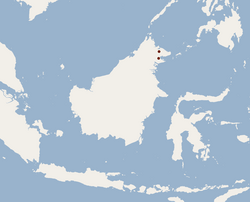| Gomantong myotis | |
|---|---|
| Scientific classification | |
| Kingdom: | Animalia |
| Phylum: | Chordata |
| Class: | Mammalia |
| Order: | Chiroptera |
| Family: | Vespertilionidae |
| Genus: | Myotis |
| Species: | M. gomantongensis |
| Binomial name | |
| Myotis gomantongensis Francis & Hill, 1998 | |
 | |
The Gomantong myotis (Myotis gomantongensis) is a species of bat in the family Vespertilionidae [2] that is endemic to Sabah district of Malaysia. [1]
